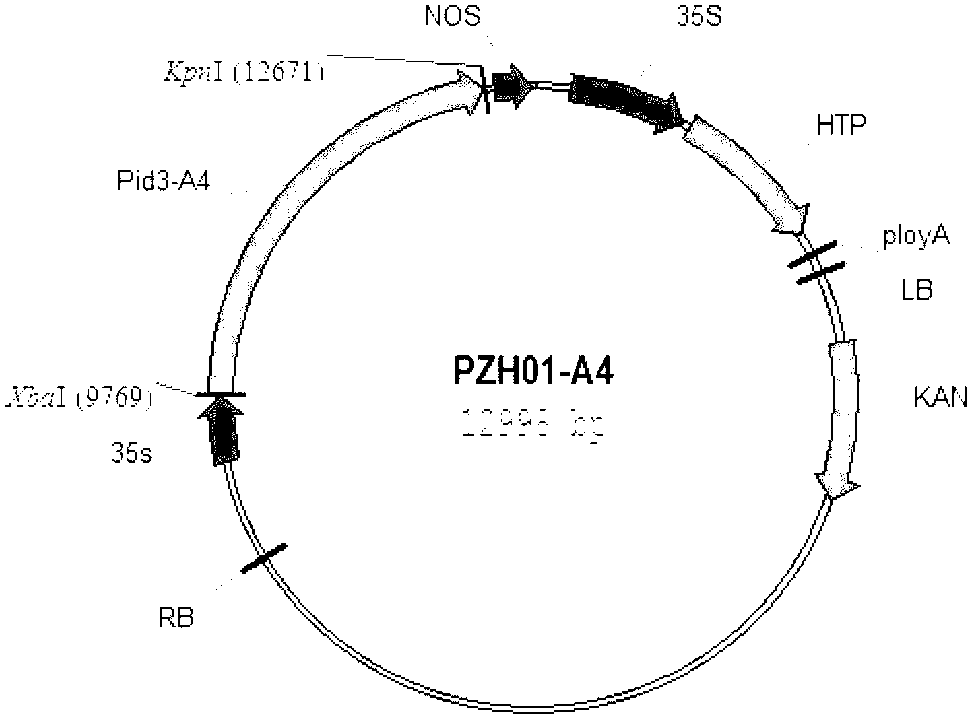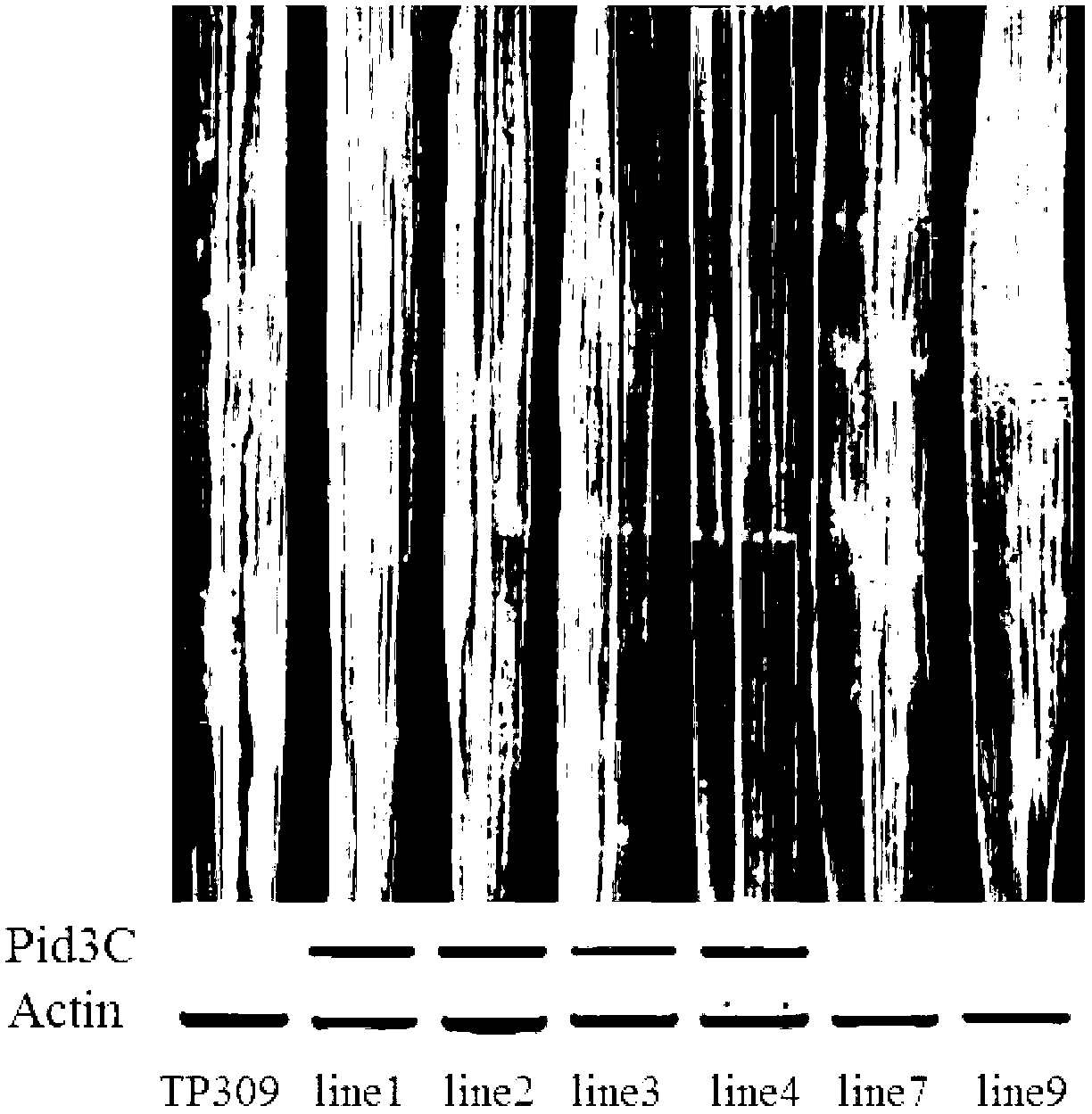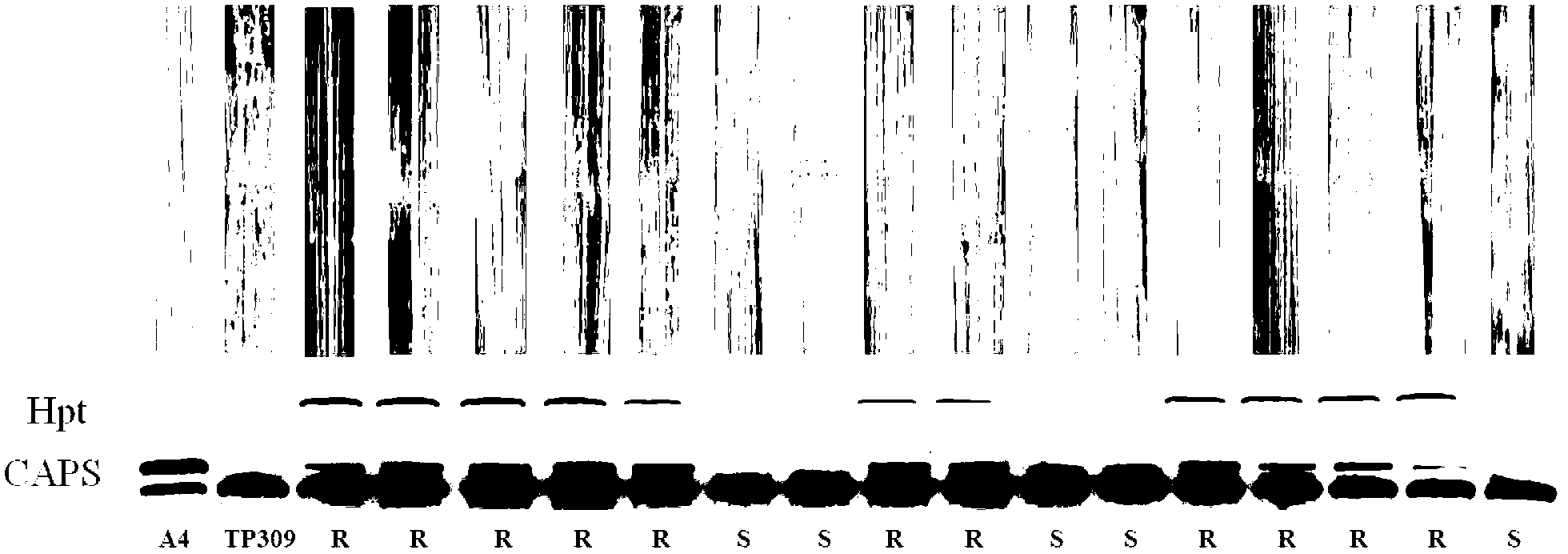Rice blast disease-resisting protein, coding gene and application thereof
A rice blast resistance and encoding technology, which is applied in the fields of application, genetic engineering, and plant gene improvement, can solve problems such as the difficulty of judging clustered gene resistance genes, few blast resistance genes, and heavy workload
- Summary
- Abstract
- Description
- Claims
- Application Information
AI Technical Summary
Problems solved by technology
Method used
Image
Examples
Embodiment 1
[0057] Embodiment 1, the acquisition of rice blast resistance gene Pid3-A4
[0058] In this example, the homologous gene for blast resistance in Oryza rufipogon (Oryza.
[0059] 1. Acquisition of the sequence information of rice blast resistance gene Pid3
[0060] The rice blast resistance gene Pdi3 was cloned from the local rice cultivar Digu. It has good resistance to the rice blast fungus race in the japonica rice region, and the identification race used for positioning cloning is the rice blast fungus race in the japonica rice region Zhong-10-8-14. Obtained from NCBI (http: / / www.ncbi.nlm.nih.gov) the whole gene sequence of rice blast resistance gene Pid3 in Digu (GenBank: No. 3010-5784 of FJ745364.1), the full length of Pid3 gene is 2775bp, Contains an intron, encodes an N-terminal non-TIR, non-CC NBS-LRR protein containing a conserved motif: RSLALSIEDVVD (78-89aa). The NBS domain is encoded by amino acids 158 to 466, and there are 13 incomplete LRRs between amino acids...
Embodiment 2
[0076] Example 2, Obtaining and Functional Research of Pid3-A4 Transgenic Rice
[0077] 1. Obtaining of rice transgenic for Pid3-A4
[0078] 1. Construction of recombinant expression vector PZH01-pid3-A4
[0079] The PCR product that embodiment 1 obtains (TT TCTAGA +sequence 1+ GGTACC AG) Digested with Xba Ⅰ and Kpn Ⅰ, the fragment obtained was similar to the plant binary expression vector PZH01 (Xiao, H., Wang, Y., Liu, D., Wang, W., Li, X. ,Zhao,X.,Xu,J.,Zhai,W.and Zhu,L.(2003)Functional analysis of the rice AP3 homologue OsMADS16 by RNA interference.Plant Mol.Biol.52,957-966. Publicly available from Chinese Academy of Sciences Ligated with the vector fragment obtained from the Institute of Developmental Biology), the ligated product was transformed into Escherichia coli DH5a to obtain a transformant, the transformant was shaken and the plasmid was extracted, and sent for sequencing. After sequencing, it was shown that the recombinant plasmid inserted into the Pid3-A4 ...
PUM
| Property | Measurement | Unit |
|---|---|---|
| Diameter | aaaaa | aaaaa |
| Diameter | aaaaa | aaaaa |
| Diameter | aaaaa | aaaaa |
Abstract
Description
Claims
Application Information
 Login to View More
Login to View More - R&D
- Intellectual Property
- Life Sciences
- Materials
- Tech Scout
- Unparalleled Data Quality
- Higher Quality Content
- 60% Fewer Hallucinations
Browse by: Latest US Patents, China's latest patents, Technical Efficacy Thesaurus, Application Domain, Technology Topic, Popular Technical Reports.
© 2025 PatSnap. All rights reserved.Legal|Privacy policy|Modern Slavery Act Transparency Statement|Sitemap|About US| Contact US: help@patsnap.com



